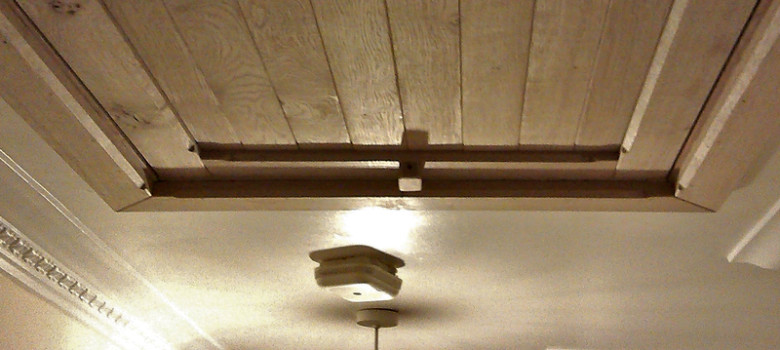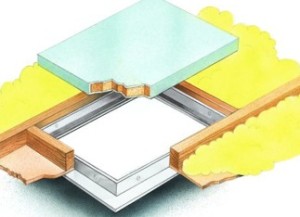
Why should I insulate my loft hatch?
Your loft hatch can cause cold draughts to enter the living space of your home, especially if you have a cold loft space (i.e. insulated at joist level rather than rafter level).
Draught-proofing the loft hatch should be done at the same time as insulating the loft space to ensure you gain the maximum savings on your energy bills.
How to draught-proof a loft hatch
First of all: be careful. If you intend to insulate the loft and draught-proof the hatch yourself, it is imperative you take safety seriously. You must take care whenever you work up a ladder and if you feel unsafe or not entirely comfortable undertaking this then please use a certified installer.
There tend to be two types of loft hatch:
- The hatch rests on the frame of the loft entrance.
- The loft hatch is hinged and will swing down when opened.
To draught-proof the first of these, you can simply put a compression seal or foam strip around the perimeter of the bottom of the loft hatch. When the hatch sits in place, the seal should ensure that all draughts are stopped.
If the loft hatch is hinged, you will need to put either the compression seal or the foam strip on the outside perimeter on the top of loft hatch. You will also need to put an equivalent strip on the inside of the hatch frame so that the two strips meet, creating an airtight barrier to stop the draughts.
Insulating the top of your loft hatch
Once you have insulated your loft space and you have draught-proofed the loft hatch, creating a seal to stop cold air entering the main house and hot air escaping, it is also worth insulating the top of the loft hatch as a final step. This is fairly simple process; essentially you just need to attach the insulation to the top of the loft hatch.
How do I do this?
Quite a neat way of doing this is gluing a plastic carrier bag to the top of the loft hatch (covering as much of the loft hatch as you can without going over any of the edges. You can then stuff the bag with insulating wool and tape it closed. Sealing the insulation within the bag prevents fibres coming apart when you open the loft hatch, so you can avoid breathing them in or getting them on your skin.













I am trying to replace a loft door the maximum available opening is 695mmx880mm there is enough room to have a 50mm architrave type trim around this opening.
I am wanting the unit to be insulated.
The door can be hinged from the short edge or the long edge.
Please if you can can you give me a quote including delivery.
Regards
Steve Dolan
10 Woodlands Grove Baildon
BD175BD
07979 855904
What about the second type of loft hatch, i.e. the drop down type?
It’s in the article:
“If the loft hatch is hinged, you will need to put either the compression seal or the foam strip on the outside perimeter on the top of loft hatch. You will also need to put an equivalent strip on the inside of the hatch frame so that the two strips meet, creating an airtight barrier to stop the draughts.”
Your fucked basically
We have just released a product that does this job easily, via retro fitting over the loft hatch
No ‘experts’, of which there seems to be dozens, tell you which is the most effective insulation, Some say blanket insulation. others suggest using a bit of the standard loft rolls. Yet more will say use foam backed foil and others rigid foam insulation. Seeing as you only do it once, you and if you have to buy it (usually far too much in a pack), you may as well use the best. So what is the most efficient?